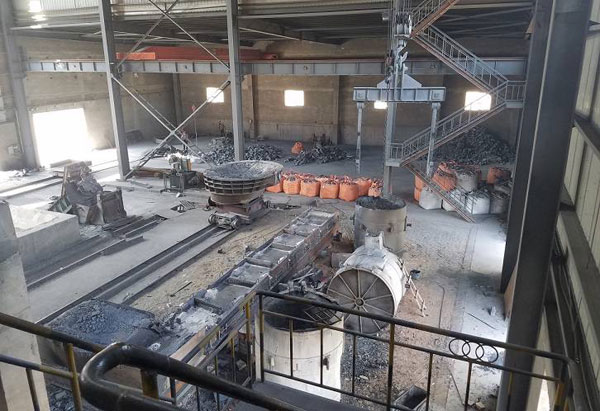
The Calcium-silicon Alloy Market research report provides a comprehensive analysis of the market, including market dynamics, strategic analysis, pricing analysis, and market landscape. It also includes a detailed analysis of key players and their offerings, as well as emerging trends and innovations. The research report also outlines the key drivers and constraints that are impacting the market.
Metallurgical uses of silicon calcium alloy include deoxygenation and temperature enhancement in steel workshops. The alloy can also be used as an additive for ball-in-k cast iron production. It is made by fully reacting silicon and calcium in high-temperature environments. There are three main production methods for silicon calcium: carbon thermal, mixing, and layering.
Silicon calcium alloy is a composite material composed of elements of silicon, calcium, and iron. It is an ideal desulfurizing and deoxygenating agent. It is widely used in steelmaking to produce high-quality and low-carbon steel. It is also an ideal temperature booster in steel workshops. It is an excellent additive for ball-ink cast iron.

There are various production methods for silicon calcium alloy in the metalurgic industry. The first method involves the simultaneous reduction of calcium and silicon oxides by carbon. This method is used for high purity silicon. In this method, carbon and silicon are obtained with an extraction efficiency of 67% and 73%, respectively.
The second method involves the electrolysis of a calcium derivative in a molten salt bath. The calcium is then alloyed with a metal on the cathode. This process can produce high purity metals. The method can also produce calcium carbide, a chemical compound that contains calcium.
Silicon calcium alloy is a versatile material that can be used in many industries. It is a good choice for heating agents in converter steel workshops, inoculants for cast iron, and an additive in the production of ductile iron. In recent years, the process of manufacturing silicon calcium alloy has been improved to achieve improved quality and efficiency. The alloy is produced using wire feeders and a LF refining furnace.
In addition to market share analysis, the report also analyzes the competitive landscape of the Calcium-Silicon Alloy industry. This report will identify the top players in the market and their strategies in achieving profitability. It will also examine the market's size and growth rate, as well as its key regional and country-specific markets.
The market for calcium-silicon alloys will experience growth over the coming years, thanks to the favorable macroeconomic environment and the availability of raw materials. The alloys' low price and advantages in manufacturing will drive their demand. Additionally, more companies are investing in advanced technologies, which can help them cut costs and increase productivity. Moreover, the increasing GDP of Asia Pacific countries will boost the demand for calcium-silicon alloys. Furthermore, the continued use of cast iron in manufacturing processes will also benefit the market.
The Calcium Silicon Alloy market report provides detailed analysis of the industry by type, application, and region. It includes an exhaustive assessment of leading companies in the industry, as well as a SWOT analysis. It also features an expert opinion, full table of contents, and figures and tables.
Calcium Silicon Alloy is a material that is a vital component of steel and cast iron. It is used in the manufacturing of steel and other metals. The metallurgical industry requires this type of material for a variety of purposes. This report focuses on the global market for this product. It also analyzes pricing data by type and region.
Various industries use silicon alloys for different purposes. It has been studied in North America, Europe, Asia-Pacific, and LAMEA.

Write a Message